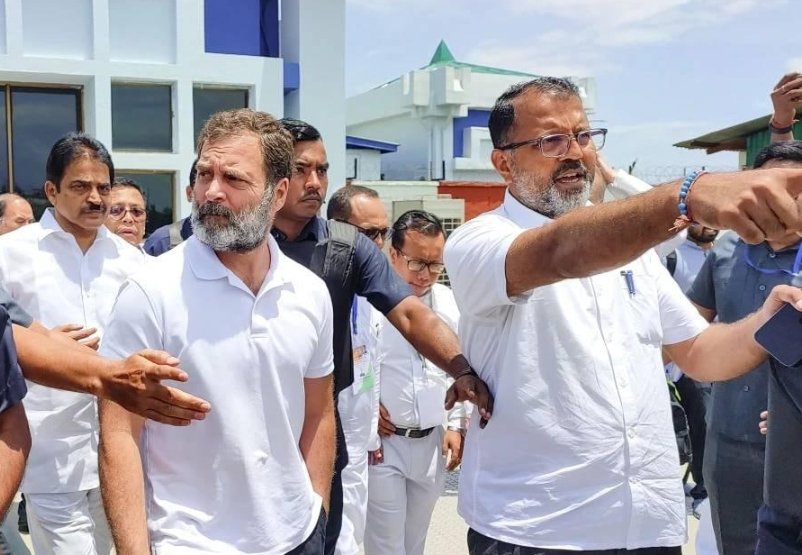Congress is trying to clean up the mess it created a long time back


Congress is trying to clean up the mess it created a long time back. The main reason behind the chaos in Manipur is because of the change in demographics which took place in Manipur. Manipur has 41% Meitei Hindus, who are the original inhabitants of the land and covers only around 10 percent of the total land of Manipur and mostly present in the valley. On the other side, the state has the same percentage ie. 41 percent of Kukki Christians/Nagas which are present in almost 90 percent of the land of Manipur and mostly present in the hilly areas.
Kukki Christians have been provided the Scheduled tribe (ST) status though not the original inhabitants…. therefore no person is allowed to settle in the area where Christians live. Also it must be kept in mind that they encompasses almost 90 percent of the state’s area.
When Meitie Hindus demanded the ST status, High Court agreed and this made Kukki Christians start riots !! Also it must be kept in mind that kukki Christians are the ones who asked for seperate nation and embarked secessionist journey aginst the Indian State which we are still dealing with.
Manipur is one of the 7 sisters of Bharat which lies in the North-Eastern part of Bharat. Unfortunately Delhi did not give much attention to North Eastern States of Bharat especially during Congress Era. It won’t be wrong to say historically North Eastern states faced discrimination from the main land of Bharat. The hills account for about 70% area of the NER and accommodate about 30% of the population and the plains constituting the remaining 30% of the area hold about 70% of its population.The region’s accessibility has always remained weak due to geographical reasons and underdeveloped transport links with the rest of India. The north east states are also very less developed as compared to mainland Bharat. One of the reasons for the economic backwardness of the NER is the poor state of basic infrastructural facilities like roadways, waterways, energy and so on as well as social infrastructure like educational institutions, health facilities etc. But it should also be noted that the situation saw a bright light after the coming of Bhartiya Janta Party in the state.
These factors have already turned north eastern states into a delicate thread. Plus the Northeastern regions have witnessed a drastic change in demographics after 1951.Northeast India forms a major region of Christian concentration in India today. Of the 2.78 crore Christians counted in 2011, 78 lakh are in the northeast (including Assam). This is the largest concentration of Christians in India after the coastal region stretching from southern Tamil Nadu and Kerala to coastal Karnataka, Goa and Maharashtra.But unlike other regions, the spread of Christianity in the northeast is almost entirely a phenomenon of the twentieth century. Much of the Christian expansion in the northeast occurred during 1931-51, and more prominently during 1941-51.
Manipur as a state holds 41.29 percentage of Christians with Hindu population of 41.39. Almost all Northeastern shows the same demographics. Christian missionaries are operating in large numbers in north eastern parts of Bharat with an intention of changing the demographics. When a person changes his religion, not only does his method of worship changes but also his relationship with land, water, forest also goes a tectonic change. Na kare Narayan if the demographics of North Eastern States changes and Christians come in majority, Bharat will see a rise in seperatist movements in geometric progressions because a hindu from northeastern Bharat considers the land of Bharat sacred and will never raise his voice to cut his Ma Bharti but when he converts, unfortunately he shares no relation with the land. After conversion to Christianity, this land is no more sacred to him. His only connection and faith lies with Jesus. Therefore if Christians comes in majority in the North Eastern states of Bharat, they will raise their demands for a seperate Christian nation same like we saw in 1940s and Bharat might go a second wave of partition.
DISCLAIMER: The author is solely responsible for the views expressed in this article. The author carries the responsibility for citing and/or licensing of images utilized within the text.
